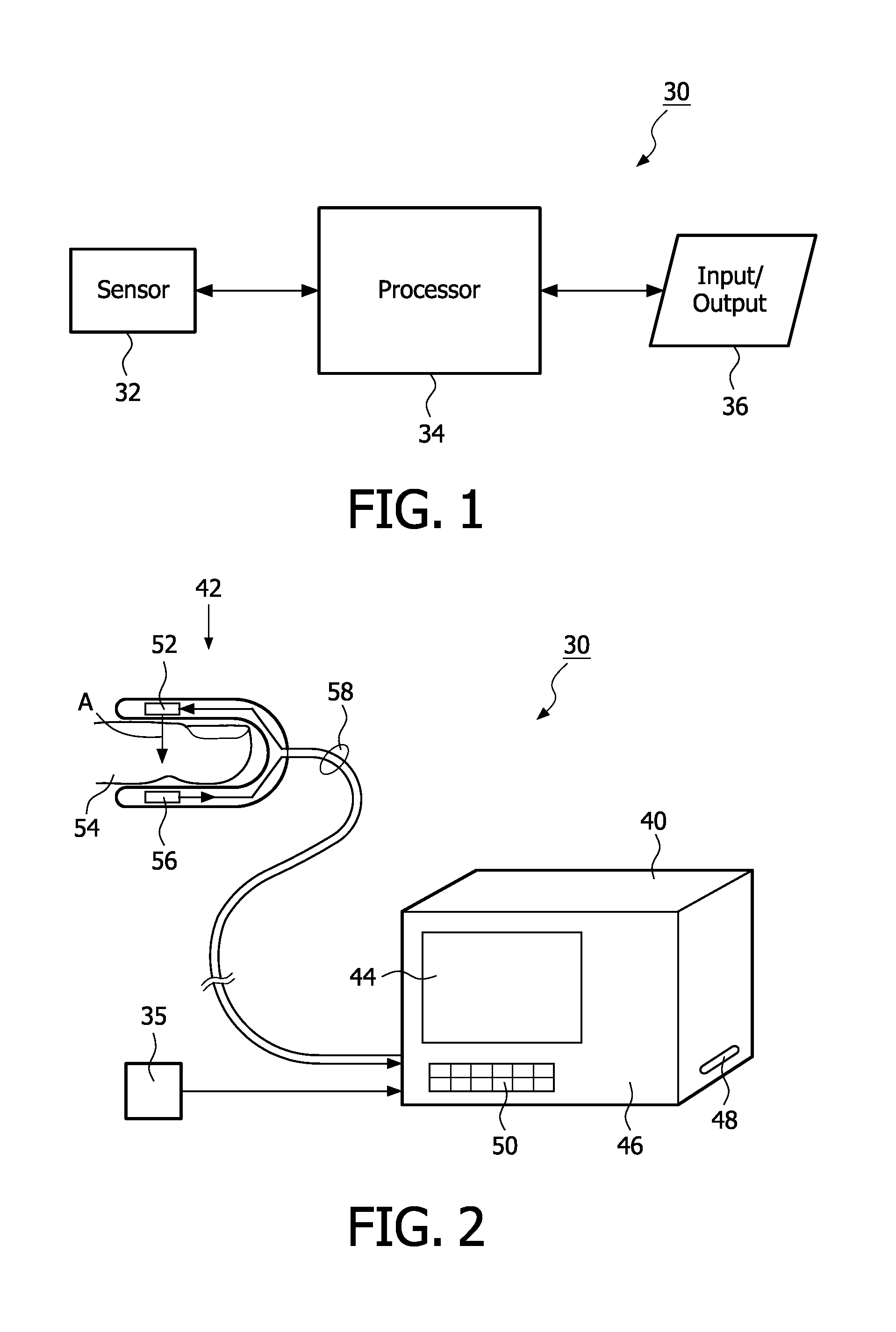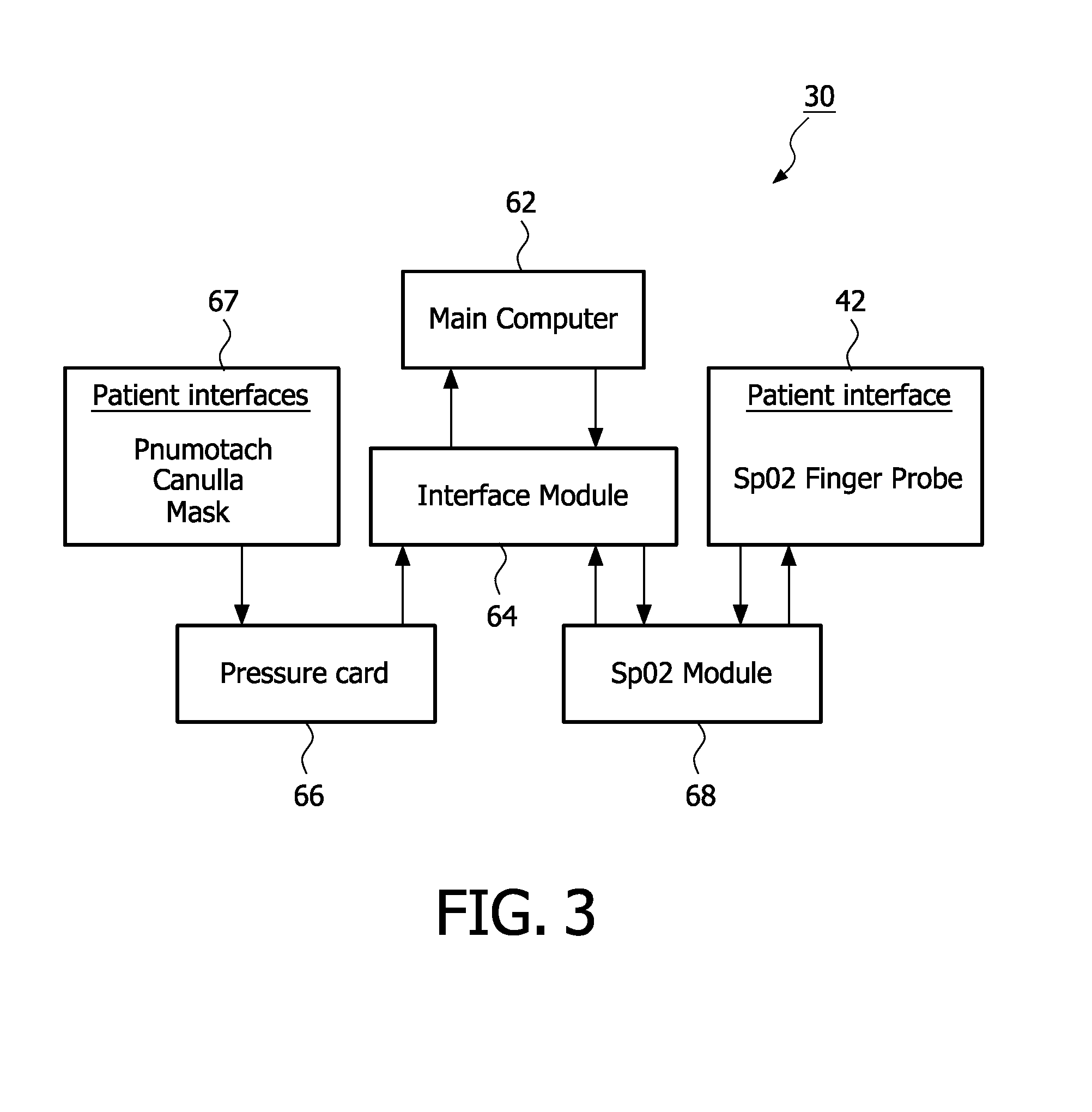Apparatus and method for monitoring pressure related changes in the extra-thoracic arterial circulatory system
- Summary
- Abstract
- Description
- Claims
- Application Information
AI Technical Summary
Benefits of technology
Problems solved by technology
Method used
Image
Examples
Embodiment Construction
[0047]Mammals displace blood from within the thorax to the extra-thoracic circulation with each heartbeat and with each breath. The displacement of blood from the thorax by the heart is due to the volumetric discharge of blood from the heart into the arterial system, and, in particular, into the aorta. For example, the work of the heart changes the pressure of the blood in the thoracic vessels relative to that in the systemic circulation. In addition, respiration or breathing also causes a pressure change in the thorax, and, hence, displacement of blood from the thorax to the extra-thoracic circulation. For purposes of the present invention, the changes in volumetric discharge of blood from the heart that cause a measurable distention of the extra-thoracic arterial circulation and the pressure changes in the thorax that occur during each heartbeat and during each respiratory cycle that also cause a measurable distention of the extra-thoracic arterial circulation are collectively ref...
PUM
 Login to View More
Login to View More Abstract
Description
Claims
Application Information
 Login to View More
Login to View More - R&D
- Intellectual Property
- Life Sciences
- Materials
- Tech Scout
- Unparalleled Data Quality
- Higher Quality Content
- 60% Fewer Hallucinations
Browse by: Latest US Patents, China's latest patents, Technical Efficacy Thesaurus, Application Domain, Technology Topic, Popular Technical Reports.
© 2025 PatSnap. All rights reserved.Legal|Privacy policy|Modern Slavery Act Transparency Statement|Sitemap|About US| Contact US: help@patsnap.com



